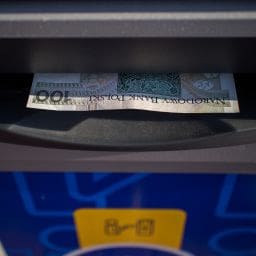🚗 Motor Matters – The Ultimate Guide to Owning and Driving a Car in Poland
🛒 Buying a Car in Poland – Tips, Tricks & Traps
Let’s start at the beginning—buying a car. You can buy either a new car or a used one. New cars are usually bought from dealerships, which are pretty straightforward but of course, more expensive. Most newcomers opt for used cars.
There are two main ways to find a used car in Poland:
- 🔍 Online portals – Popular websites include otomoto.pl and olx.pl.
- 🗣️ Word of mouth – If you’re in a smaller town or have Polish friends, local recommendations can be gold.
Now, the fun part—what to look out for:
- ⚠️ Dodgy mileage – “Cofanie licznika” (rolling back the odometer) is still a problem. Always check the service history and car documents (ask for the “książka serwisowa”).
- 💥 Crash history – Many second-hand cars in Poland have been in accidents. Look for signs of resprayed panels, uneven gaps between body panels, or suspicious pricing.
- 🛠️ Mechanic check – Always (ALWAYS!) get a used car inspected by a mechanic. Many workshops offer a pre-purchase inspection (“przegląd przedzakupowy”). Worth every złoty.
📄 How to Register a Car in Poland
Once you’ve bought your dream machine, it’s time to make it legit. You’ll need to register your car at your local wydział komunikacji (vehicle registration office). Here’s what you’ll need:
- 🪪 Proof of ownership – The sales agreement (“umowa kupna-sprzedaży”) or invoice.
- 📝 Car documents – Registration certificate (“dowód rejestracyjny”), vehicle card (“karta pojazdu” if applicable), and valid technical inspection.
- 🧾 Proof of insurance – At least third-party liability insurance (OC).
- 🧍 Proof of identity – Your passport or residence permit, and possibly a PESEL number.
- 🏡 Proof of address – A rental contract or utility bill will usually do.
You’ll pay a fee (roughly 180-250 PLN), get temporary registration plates (white-on-red), and then after a couple of weeks, you’ll receive your official plates and updated documents.
🛣️ Driving in Poland – Is It Safe?
The good news: the roads in Poland are much better than they were a decade ago. The bad news: Polish drivers have a bit of a reputation. Let’s break it down:
- 🚀 Fast and furious – Speeding is common, especially on smaller roads. Always keep your distance and stay alert.
- 🌀 Roundabout roulette – Polish drivers love roundabouts, but the rules can feel… interpretive. Legally, you yield to traffic already on the roundabout, but don’t count on everyone knowing this (more about this below.)
- ⚠️ Pedestrian crossings – Drivers are supposed to stop for pedestrians, but many don’t. Always double-check before crossing, even if you have the right of way (more about this below.)
- ❄️ Winter driving – Icy roads and heavy snow can be a challenge. Winter tyres are not optional—they’re essential.
In short: Polish roads are pretty good, but the drivers can be aggressive. Defensive driving is key.
🛡️ Car Insurance in Poland
By law, you must have at least third-party liability insurance (OC – “odpowiedzialność cywilna”). Without this, you can’t register the car, and driving without it will result in serious fines.
- 📞 OC (liability insurance) – Covers damage you cause to others.
- 🔒 AC (autocasco) – Covers damage to your own vehicle, theft, vandalism, etc. Optional but recommended for newer cars.
- 🚑 Assistance – Towing and breakdown cover. Often bundled with AC.
- ⚖️ NNW (personal accident insurance) – Covers medical costs for you and passengers. Optional.
Popular insurers include PZU, Warta, Allianz, AXA, and Link4. You can compare quotes on sites like rankomat.pl or mubi.pl.
❌ The Right-Hand Drive Dilemma
Bringing your beloved British car over to Poland? Fair enough—but brace yourself. Poland drives on the right-hand side of the road, which makes right-hand-drive (RHD) vehicles… less than ideal.
- 🙈 Overtaking is terrifying – You’re sitting on the wrong side of the car, meaning you’ll struggle to see around that lumbering lorry in front. Prepare for heart-stopping manoeuvres or eternal patience.
- 💸 Insurance can be higher – Some insurers charge more for RHD cars, or flat-out won’t cover them. It’s seen as riskier.
- 🧰 Servicing is a pain – Polish mechanics aren’t always equipped for RHD quirks. Simple fixes can become puzzles.
- 📉 Resale value is poor – You’ll have a much harder time selling your RHD vehicle. Most buyers just don’t want the hassle.
In short: if you’re planning to be here long-term, it’s better to bite the bullet and go LHD (left-hand-drive). Your nerves—and your wallet—will thank you.
🚗 Importing a Right-Hand Drive Car into Poland? Here’s What You Need to Know! 🇵🇱
✅ Yes, you can!
But the rules depend on when your car was first registered in the UK:
📅 If registered BEFORE 31 Dec 2020:
- 🚫 You don’t need to move the steering wheel.
- 🔧 You must:
- 💡 Adjust the headlights for right-side traffic
- 💡 Make sure the rear fog light is on the left
- 💡 Speedometer must show km/h
- 💡 Mirrors must ensure good visibility
📅 If registered AFTER 1 Jan 2021:
- 🌍 Treated as a non-EU import.
- 🔄 You must relocate the steering wheel to the left side.
- 🛠️ You’ll also need to:
- 💸 Pay customs duties and VAT
- 🔧 Make technical adjustments as above
📝 Documents You’ll Need:
- 📄 UK registration (V5C)
- 🧾 Purchase invoice
- 📑 Customs clearance (if needed)
- 🛠️ Technical inspection certificate
- 📝 Polish translations of all docs
- 🪪 Proof of identity & residency
💰 Costs:
- 💵 Excise Duty (3.1% or 18.6% depending on engine size)
- 💳 Registration fees (~PLN 200)
- 🛠️ Technical changes (relocating the steering wheel can cost over PLN 10,000!)
💶 Car Costs in Poland – Expensive or Affordable?
Let’s talk money. Compared to Western Europe, Poland can feel like a bargain—but not in every category. Here’s a breakdown:
- 🚘 Used car prices – Slightly cheaper than in Germany or the UK, but the condition can vary wildly.
- 🛢️ Fuel – Petrol and diesel prices fluctuate, but expect to pay a bit less than in the UK, more than in the US.
- 🔧 Servicing and repairs – Generally cheaper than Western Europe. Labour costs are lower, but beware of cowboy mechanics.
- 🧾 Insurance – Depends on your age, car, and driving history. Expats might pay more if they can’t prove a no-claims bonus.
- 🅿️ Parking – In cities like Warsaw or Kraków, it’s either expensive or non-existent. Factor in parking permits, fines, and potential rage.
Overall, running a car in Poland is manageable, but not exactly “cheap.” It’s definitely worth comparing your options.
🇩🇪 Importing a Car from Germany – Genius or Madness?
You’ve probably heard that buying a car in Germany and importing it to Poland can save money. This is true… sometimes. Germany has a huge used car market, and vehicles are often in better condition than their Polish counterparts.
But before you hop on a Ryanair flight to Frankfurt with your Złotówki in hand, consider the following:
- 🛂 Import paperwork – You’ll need proof of purchase, de-registration from Germany, and Polish customs paperwork.
- 🧾 Excise duty (akcyza) – Based on engine size. Smaller engines = less tax. For example:
- 📉 Under 2.0L = 3.1%
- 📈 Over 2.0L = 18.6%
- 🚗 Technical inspection – Mandatory once it’s in Poland, even if it passed a TÜV in Germany.
- 🆔 Translation of documents – All German docs must be officially translated into Polish.
- 📋 Registration process – Similar to buying a local car, but with more hoops to jump through.
Is it worth it? If you’re buying a specific make/model or something higher-end, yes—it can be a smart move. But for budget or everyday cars? You might spend more time and money than you save.
📋 Documents You Should Always Carry
Polish police love a good roadside check. If you get pulled over, make sure you’ve got these with you:
- 🪪 Your driving licence – EU licences are accepted. If you’re from outside the EU, you may need an international driving permit or Polish licence after 6 months.
- 📘 Dowód rejestracyjny – Your vehicle registration document.
- 🧾 Proof of insurance – Either a printed copy or via your insurer’s app (if accepted).
- 🔧 Valid technical inspection – It’s noted in your dowód, but it pays to know the expiry date.
Failure to produce any of these can result in fines—or even having your car impounded. Yikes.
👮♂️ Speed Limits & Fines
Polish speed limits might surprise you. Here’s the quick rundown:
- 🏘️ Urban areas – 50 km/h (or 60 km/h between 11pm–5am, unless signed otherwise)
- 🛣️ Single carriageways – 90 km/h
- 🚗 Dual carriageways – 100 km/h
- 🛤️ Expressways – 120 km/h
- 🚀 Motorways – 140 km/h
Fines are issued via post or on the spot. Poland recently upped the penalties, so drive responsibly unless you want your bank account to cry.
🧭 Public Transport vs Car – Do You Even Need One?
This might sound odd in an article about cars, but let’s be honest: do you actually need one?
- 🚋 City living – Warsaw, Kraków, Wrocław and Gdańsk have excellent public transport. Trams and buses are cheap, frequent, and reliable. For many, a car is more hassle than help.
- 🏞️ Rural life – Once you get out of the cities, a car becomes essential. Buses are rare and trains non-existent in some regions.
- 🧳 Weekend warriors – If you love road trips, skiing, or exploring little mountain villages, a car is a game-changer.
So yes, you might be better off using a car-sharing app like Panek or Traficar for occasional trips, rather than committing to full-on ownership.
🔧 Bonus Tips for First-Time Car Owners in Poland
- 🧼 Car washes are everywhere – And they’re cheap. Treat your ride to a regular pampering session. Your neighbours will silently judge a filthy car.
- 🅿️ Avoid illegal parking – Municipal police patrol with cameras and clamps. You don’t want to tango with the “Straż Miejska.”
- 🌍 Google Maps + Yanosik – Google is good, but Yanosik is great. It’s the Polish Waze: live speed trap warnings, traffic, and more.
- 📅 Annual inspection reminder – Your car must pass a technical check every year. Don’t forget—it’s not automatic!
🌀 Roundabouts: Poland’s Favourite Game of Chicken
Polish cities love roundabouts. And while the official rule is “yield to vehicles already in the circle,” reality sometimes takes creative liberties. Some drivers signal left to go straight. Others don’t signal at all. Some treat roundabouts like racetracks. If you’re new, approach slowly, signal clearly, and keep both eyes peeled for rogue lane changes.
Top Tip: Watch out for multi-lane roundabouts. They’re the stuff of driving tests and nightmares. Use your mirrors like your life depends on it—because sometimes, it does.
🦓 Zebra Crossings: Stripes of Uncertainty
Pedestrian crossings in Poland are marked with bold white stripes and the faint smell of danger. By law, drivers must stop for pedestrians already on or stepping onto the crossing. But enforcement is patchy, and habits die hard.
Survival Strategy: When you’re behind the wheel, slow down near zebra crossings. When you’re on foot, make eye contact with the driver before stepping out—assertiveness + caution is the magic combo.
🅿️ Parking in Poland: A Test of Skill and Sanity
Urban parking can feel like a competitive sport. In cities like Warsaw, you’ll find paid zones, colour-coded curbs, and rules that seem to change from street to street. Double parking, creative curb-hopping, and mystery dents are all part of the experience.
Pro Tips:
- 🔍 Always check for signs or machines nearby.
- 📱 Use apps like SkyCash or moBiLET to pay and extend parking time.
- 🚫 Don’t risk free-for-all zones unless you’re cool with tickets—or clamps.
And yes, parallel parking on a steep hill in icy weather absolutely builds character.
🚸 Road Signs: Symbols from Another Universe
Poland’s road signs follow EU standards… mostly. But some will still make you do a double take.
- 📘 White-on-blue vs. white-on-black signs – One shows priority; the other shows you’re being demoted.
- ⚠️ Triangle with a black cross – Apparently means “watch out for intersections of existential crisis.”
- 🚫 A red circle with a car and a motorcycle – Means “no fun allowed here.”
It takes time, but you’ll soon learn to decode the local sign language. Until then, Google Lens and a healthy sense of humour can be your co-pilots.
🛑 Final Thoughts – Should You Drive in Poland?
Driving in Poland can be liberating. It opens up the country in ways buses and trains can’t. But it also comes with a learning curve. Aggressive drivers, paperwork hurdles, and the occasional icy deathtrap road can test your patience.
If you’ve got the stomach for it, buying and owning a car here can be practical, even enjoyable. Just go in with your eyes open, your insurance paid, and your horn ready. Dobrze jechać! 🚙💨















